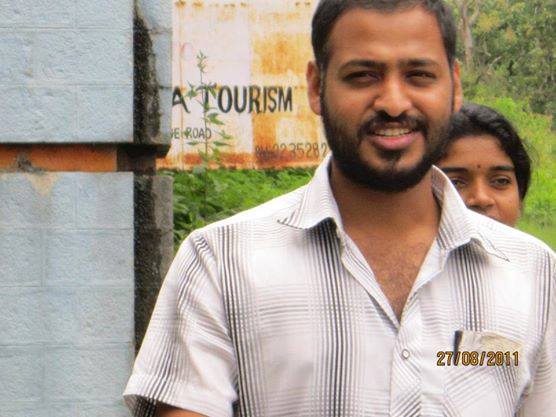Murali Shanmugavelan
 In 1936, Bhimrao Ramji Ambedkar, fondly called as Babasaheb, wrote an un-delivered lecture called Annihilation of Caste (AoC) for a Hindu reform group called Jat-Pat Todak Mandal (Society for the Abolition of Caste system). The group rejected Ambedkar’s text as too radical as it made the case for the fundamental destruction of Caste system. Since then, the text has been influential in raising Dalit consciousness and consolidating anti-caste movements. The text has also been widely circulated, often at no cost, and translated into almost all Indian languages but systematically ignored in mainstream public discussions. The text hardly features in Indian academia which continues to be a domain of upper caste intellectuals.
In 1936, Bhimrao Ramji Ambedkar, fondly called as Babasaheb, wrote an un-delivered lecture called Annihilation of Caste (AoC) for a Hindu reform group called Jat-Pat Todak Mandal (Society for the Abolition of Caste system). The group rejected Ambedkar’s text as too radical as it made the case for the fundamental destruction of Caste system. Since then, the text has been influential in raising Dalit consciousness and consolidating anti-caste movements. The text has also been widely circulated, often at no cost, and translated into almost all Indian languages but systematically ignored in mainstream public discussions. The text hardly features in Indian academia which continues to be a domain of upper caste intellectuals.
After 78 years, the text has now been ‘introduced’ by Arundhati Roy who is famous for the Booker prize winner novel ‘The God of Small Things’ (internationally published by Rupert-Murdoch owned Harper Collins) and a collection of political writings. The introduction was commissioned and published by Navayana which contentiously claims that it is ‘India’s first and only’ anti-caste publisher. This introduction has been controversial. Concerns have been raised about misappropriation and representation of the text; authority on the subject matter; and the structural privileges of those producing anti-caste knowledge.
Roy, apparently wrote this introduction ‘..for those in India, and as well as outside, who are new to the subject, for whom caste is just some exotic Hindu thing.’ So the readership is apparently targeted at those who are not familiar with Ambedkar’s texts and at those who are not sympathetic with the Dalit struggle.
Roy’s introduction to the Annihilation of Caste (AoC) opens with a polemic which draws readers’ attention to the absence of debates on Dalit atrocities in the international media circles. Roy compares Malala’s global attention with Surekha Bhotmange, a Dalit woman who was raped and tortured in Khairlanji in 2006: Madonna dedicated a song for Malala; Time magazine featured her on the cover; and western political leaders came in to support her. Roy who is against (and benefits from) the agenda of corporate media and the west’s neo-liberal agenda, uses the very same markers to illustrate how Dalits are silenced.

The betrayal to Surekha and her family in the Khairlanji massacre actually came in the form of the deafening silence in the Indian mainstream media. Compare this with another tragic incident: the 2012 Delhi gang rape that invoked (inter)national consciousness of some of the issues faced by Indian women. Nirbhaya, the victim, was awarded The International Women of Courage Award by the U.S Department of State. Anoushka Shankar, not Madonna (sorry Roy) named a song after Nirbhaya. Democracy Now radio interviewed Anoushka. UN Women released a press statement. Roy’s friend, admittedly one of her influencers, Naomi Klein wrote, ‘Indians, it seems, have had enough.’ It is the same type of people who cried for Malala but continue to be selective in their writing and ignore Dalits.
Introducing such structural bias on all levels across political ideologies, could have offered a far more compelling case as to why the seminal text on the destruction of caste should be read by all those who believe in equality, justice and dignity.
Roy’s introduction to AoC often suffers from overwrought prose thus missing opportunities to make the compelling case for reading it. The analysis is also often superficial and sometimes misappropriates the original text to criticise Ambedkar. Some examples of this are provided below.
Was Ambedkar pro-eugenics?
Roy accuses Ambedkar of using the language of eugenics, ‘a subject that was popular with European fascists’ to describe a community. Ambedkar was taken out of context here and was sensationally grouped along with European ‘fascists’.
His own conclusions were, “This shows that Caste has no scientific origin, and those who are attempting to give it an eugenic basis are trying to support by science what is grossly unscientific (5.7).”
To those who are still unconvinced, Ambedkar’s dramatic explanation was to ask “what sort of men it should have produced if caste is eugenic?”. Ambedkar wrote that according to eugenics, Hindus are C3 types, a race of pygmies and dwarfs, stunted and wanting in stamina and therefore India, as a nation, wouldn’t be fit for military service. He then concluded that this showed that the caste system did not represent the science of eugenics.
The author fails to understand that AoC was written to counter the range of potential pro-caste arguments that might be used, including those based on pseudo-science and race. The opportunity here to critique the severity of Brahmanical hegemony is regrettably lost by grouping Ambedkar with European fascists.
On Adivasis
Roy writes that ‘Ambedkar too stumbles’ on the Adivasi question and ‘adds his own touch of Brahminism’ while also echoing ‘the thinking of colonial missionaries and liberal ideologues’. She then presents the readers with edited excerpts from the section 8 of AoC: “Thirteen millions of people living in the midst of civilization are still in a savage state, and are leading the life of hereditary criminals…”
As a believer in modernity, Ambedkar’s was of the view that ‘aborigines’ should be brought into the fold of ‘civilisation’. He probably did not share the romantic views on Adivasis of Roy. He was deeply concerned if Hindus would ever recognise and understand ‘aborigines’. He argued that caste would continue to be to the detriment of aborigines and wrote that “the Hindus will probably seek to account for this savage state of the aborigines by attributing to them congenital stupidity” (8.3). His reference to Christian missionaries (8.4) was to make a case that Hindus will never improve lives of ‘aborigines’ as it would mean ‘adopting them as your own, living in their midst, and cultivating fellow-feeling – in short, loving them’ (8.3). He was also worried about their criminalised status too (under Criminal Tribes Act, 1871).
Roy also states that ‘(H)is views on Adivasis had serious consequences’ by letting the state become the custodian of Adivasi lands. This insinuates a ludicrous claim that Ambedkar’s view on Adivasis led the Indian Constitution to seize Adivasis’ homelands.
Introducing Ambedkar through Gandhi
Debates between Ambedkar and Gandhi are historic and important. These debates certainly need to be taken to today’s generations to shift perspectives on equality, non-violence and justice. Ambedkar, however, did not spend his entire life replying to Gandhi. Ambedkar also had to face challenges from other leaders like Nehru. He may not have been successful in electoral politics but today’s Dalit consciousness and assertion is unthinkable without him. Therefore introducing the AoC text by solely comparing it with Gandhi’s politics is actually limiting Ambedkar’s significance.
Roy’s introduction denies readers the opportunity to understand the nuanced relationships between caste, class, religion, capital, technology and neo-liberal politics in India and among overseas Hindus. She talks about caste patterns in economy (including absence of Dalits and Adivasis in the Forbes billionaires list!), capital and social networks but does not provide serious analysis.
Roy’s own view on capitalism, class, Marxism and Adivasis often takes the front seat in introducing Ambedkar’s text. To her, Ambedkar had embraced a pragmatic western liberalism which she connects with today’s neo-liberal-market-aggressive-capitalism. She then uses this opportunity to launch her views on globalisation, development, industry and dams, and admires Gandhi’s prophetic words on the horror of western civilisation by anecdotally linking his views with global warming.
Anti-caste movements and ideology are full of complexities, are multi-layered and require strategic alliances with different ideologies and groups. Technology and capital, for example, are used to invoke Dalit assertion and equally to suppress the movement as well. Dalits’ responses in social media to her introduction and the right wing online propaganda against Dalits is a case in point. Her introduction doesn’t reflect the nuances behind such contradictions, especially in today’s world.
Structural privilege
In several places, Roy quotes how ‘history has been kind to Gandhi’ and how his ‘godliness has become a universal phenomenon’. She is also baffled at Gandhi’s popularity in South Africa and speculates he was ‘reimported’. What she doesn’t share– another missed opportunity – is that Gandhi along with Nelson Mandela and Martin Luther King Junior, like Malala, provide no threat to western hegemony. These apostles advocated peaceful negotiations with oppressors in the name of reconciliation. The reason why Ambedkar, Malcolm X and Steve Biko, like Surekha Bhotmange, are not popular even in their own states and will remain underdogs (or ‘frothing hyenas’, if you prefer) is because their articulation is unsettling to structurally privileged people and those who enjoy hierarchy and power. In fact, it is not difficult to see that it is the same structural privilege that has provided the opportunity to the author to pen this introduction.
Further concerns have also been raised by others about this introduction and there may be more to come. For example, what is the need to refer to EV Ramasamy with the caste surname ‘Naicker’ after he announced the deletion of his caste surname and asked others to do the same in 1929 at the first provincial Self-Respect Conference?
In another instance Roy rightly points out, caste debates, unlike racial debates, are hardly discussed in the international circles as caste is au culturale and not colour-coded. She quotes an example of the 2001 World Conference against Racism in Durban, where India successfully made the case that (a) it was an internal matter, and (b) the practice of caste was not the same as race. But she is quick to make an assumption that, ‘Ambedkar would have agreed with them [the state]’. To imply that he would have supported the state which took a contrary position to Dalit activists is an unsubstantiated assumption and simplistic reading of his work.
Overall, the introduction lacks a nuanced and contextualised understanding of AoC that is required to re-introduce this text to the desired readership. Misunderstanding or misrepresenting of the original texts (especially section 5 and 8) clearly raise questions about the author’s understanding of AoC. To horribly misquote Edward Said, the introduction ‘puts the author in a whole series of possible relationships with AoC without ever losing her the relative upper hand.’
According to Roy the targeted readership fuses Hinduism with mysticism, spiritualism, non-violence, tolerance, vegetarianism, Gandhi, yoga, backpackers and the Beatles. If challenging these notions is the reason behind publishing this introduction, then it could have been a critique on Brahmanism and Hinduism, with reference to Ambedkar, rather than an introduction to AoC. At the end of the introduction Roy says that caste cannot be annihilated ‘unless those who call themselves revolutionary develop a radical critique of Brahmanism.’ Perhaps that should have been the start of the book.
~
Bibliography
Edward W. Said (1994) Orientalism, New York: Vintage Books
Ambedkar, B.R. (1936) Annihilation of Caste. http://ccnmtl.columbia.edu/projects/mmt/ambedkar/
Please also read other articles on the same issue:
Introducing Arundhati Roy and Friends: by Karthik Navayan
A tale of two prefaces: by Karthick RM
Between Savior and Seller: Critiquing Preface Politics: by Praveena Thaali
A Glass Menagerie for the Bahujans—Annihilation of Caste and Gandhi’s Wards: by James Michael and Akshay Pathak
Stigmatizing Dalits, From the Wadas to the Web: by Nilesh Kumar
Without Arundhati Roy and Gandhi, the book had its own value: Bojja Tharakam
Caste in the Name of Christ: An angry note on the Syrian Christian Caste: by Nidhin Shobhana
The Not-So-Intimate Enemy: The Loss and Erasure of the Self Under Casteism: by Gee Imaan Semmalar
Flaunting noble intentions, nurturing caste privileges: by Asha Kowtal
The Question of Free Speech: by Vaibhav Wasnik
Arundhati Roy replies to Dalit Camera
An Open Letter to Ms. Arundhati Roy: by Dalit Camera
Vedic Chants for the 21st Century
Arundhati Roy’s ‘Introduction’ to Ambedkar: Inside one Misogynistic & Xenophobic Dalit’s mind: by Anoop Kumar
The Judge, the Jury and the Goddess: by Akshay Pathak
Resisting a messiah: by Anoop Kumar
An Introduction to Anoop Kumar’s “Misogynistic and Xenophobic Rants”: by Vinay Bhat
~~~
Murali Shanmugavelan (555390@soas.ac.uk) is a PhD candidate in School of Oriental and African Studies. His research topic is ‘Everyday communicative practices of an Arundhathiyar community in Tamil Nadu’. The field site (a discriminated Dalit colony) is an ostracised public space and the people (Arundhathiyars) are the most oppressed group (called Dalit among Dalits) in Tamil Nadu. His research is about making sense of how structural and personal discriminations influence and shape Arundhathiyars’ everyday articulations to survive with dignity.
Cartoon by Unnamati Syama Sundar.










